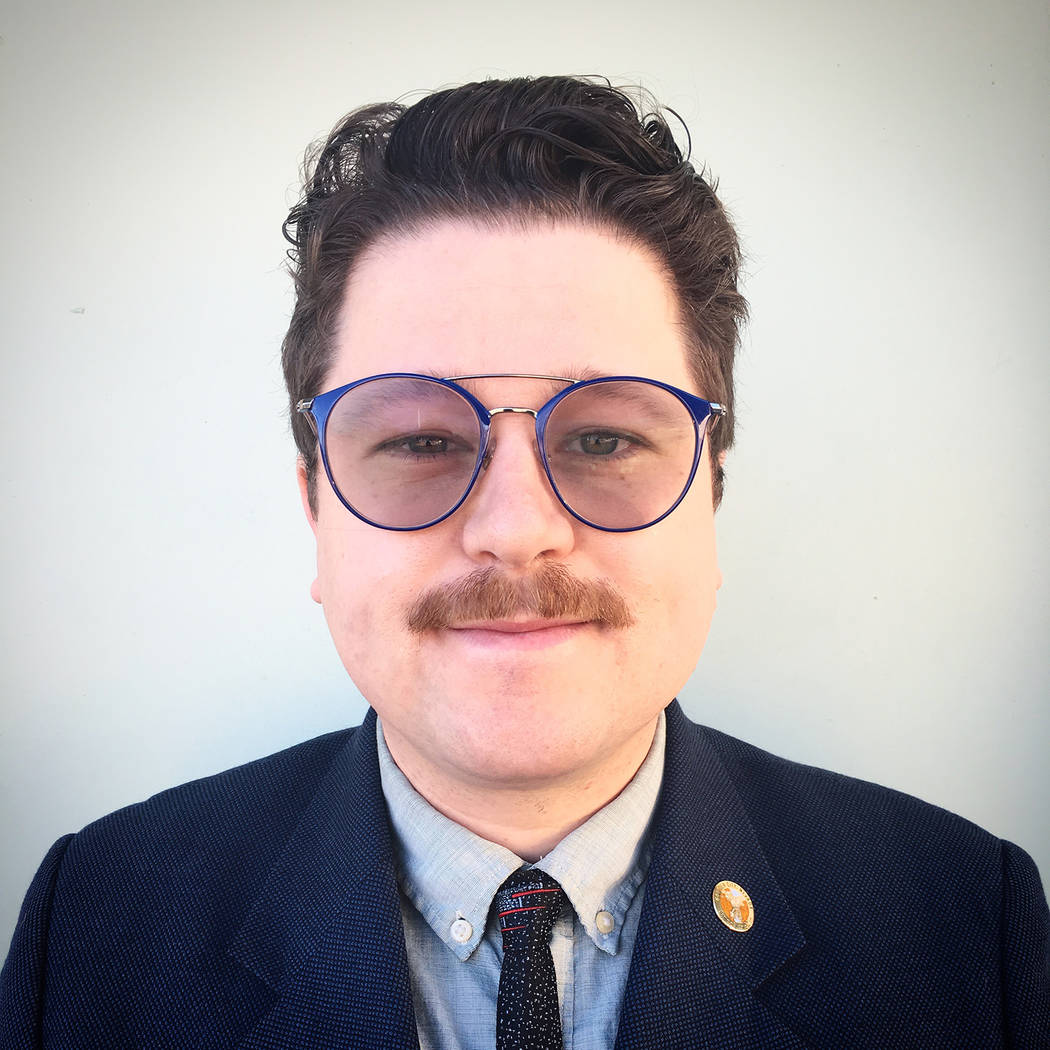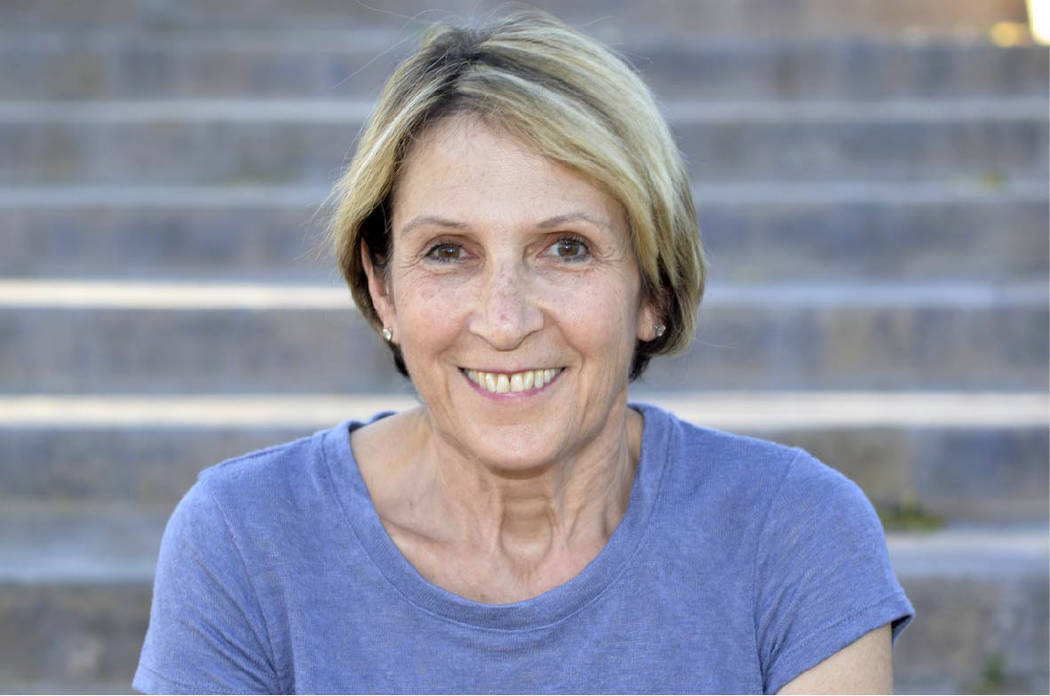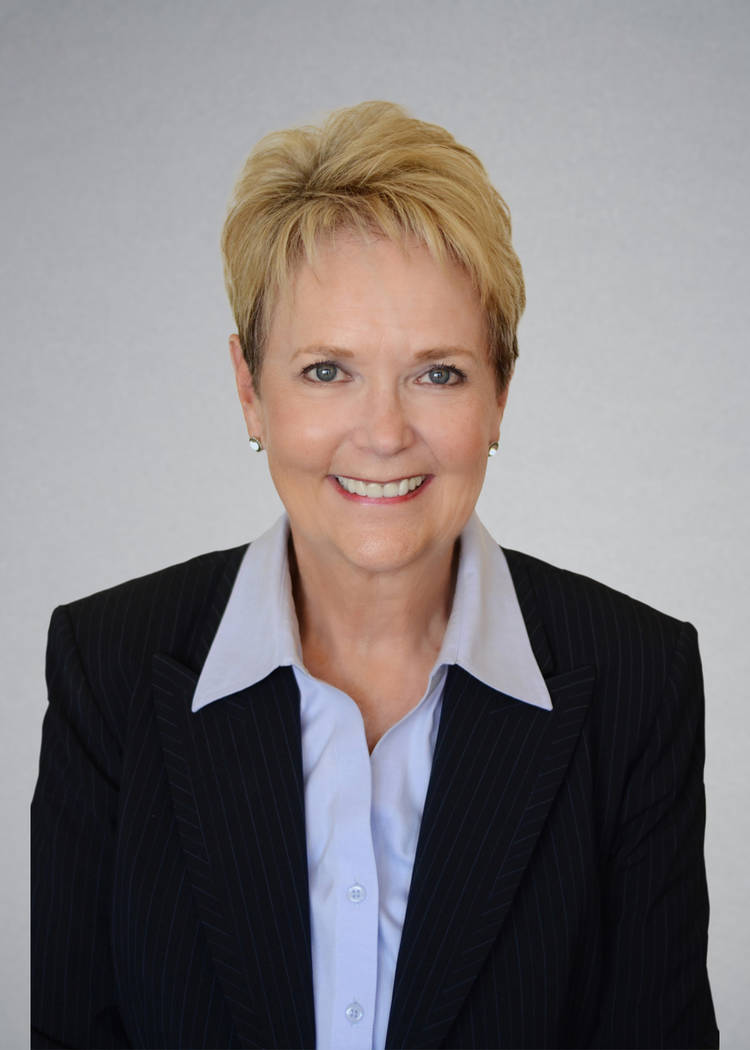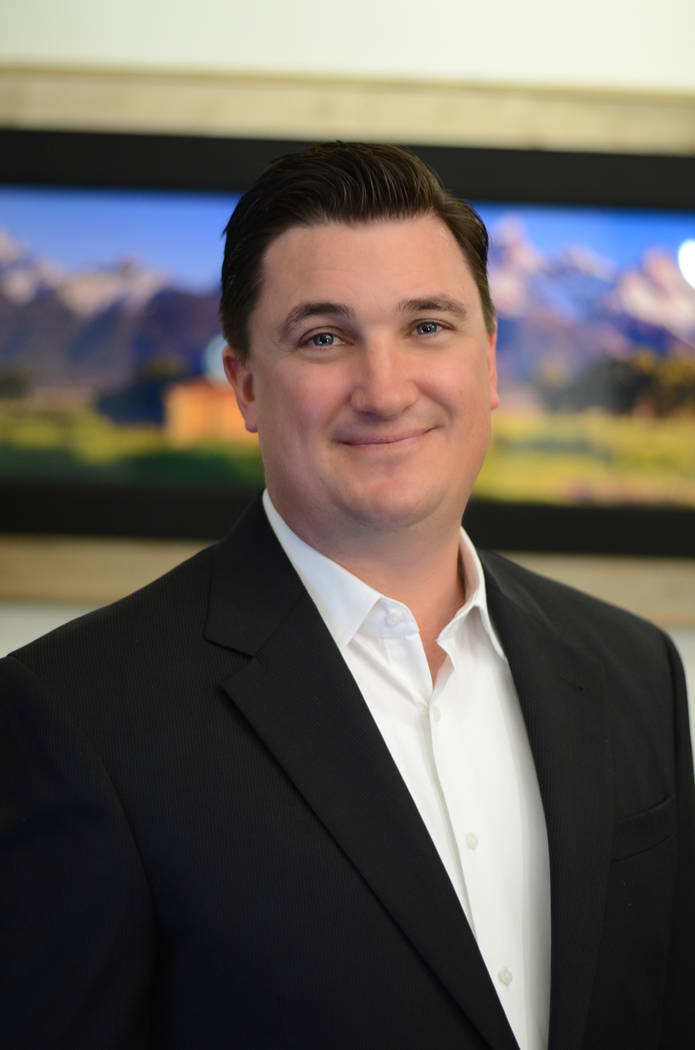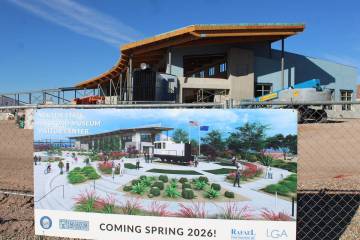Council candidates share views on city’s past, future
Four candidates, including the two incumbents, advanced from the April primary as they vie for two seats on the City Council.
Incumbents Peggy Leavitt and Rich Shuman came in first and fourth, respectively in the primary, which featured eight candidates. Leavitt had 1,639 votes, and Shuman had 999 votes.
Also advancing from the primary were James Howard Adams, who came in third with 1,103 votes, and Claudia Bridges, who came in second with 1,138 votes.
Early voting for the June 11 election starts May 25 and continues to June 7, with a local polling place open May 29 through June 1 at City Hall.
To help residents make an informed decision when casting their ballots, the Boulder City Review asked each of the candidates to answer three questions. Their responses are below.
James Howard Adams
Age: 33.
Marital status: Partner of Tsvetelina Stefanova for 14 years.
Family: Son of Stuart and Melinda Adams; brother of Mary Adams.
Education: Associate of Science in Deaf Studies.
Occupation: Musician, artist, concert and events promoter.
Length of Boulder City residency: 24 years.
Club/organization affiliations: Dam Short Film Festival volunteer.
What do you feel is your best attribute that will contribute to your success as a council member?
My ability to listen to voices often ignored and to provide them with a meaningful platform to be heard. Organizing and promoting events throughout Southern Nevada over the last decade with my partner, Tsvetelina, has provided me with a unique advantage of understanding how to encourage and strengthen participation in our community.
Our work has been recognized by numerous publications and we recently received a Certificate of Special Congressional Recognition for “supporting and promoting local talent and (our) dedication to unite Southern Nevada through music and community engagement.”
As a member of council, my role would be to represent the voice of the people, not my own interests. I believe what our city most desires now is a council that follows the lead of the community, not one that seeks subordination.
The city is looking to repurpose the old airport hangar. Do you believe this is a good idea? Why or why not? And if so, what do you think would be a good use for the facility?
I believe “The Old Hangar” is a great example of a building deserving of preservation efforts. While not yet officially designated historic, it does meet the criteria. I see great opportunity to repurpose the space into a community arts/event center to host a variety of programs. However, what is most important is not my vision for the hangar, but the community’s. Town hall meetings should be held, and input from our Historic Preservation Committee needs to be considered.
I do stand firm in my belief that the property should remain under the stewardship of the city. Considering our current historic preservation ordinances that are in place, I could not support the sale of any of our historic assets to private hands, though I would consider partnerships or entering lease agreements with them.
How has Boulder City’s history shaped its present, and what would you like to do to shape its future?
Boulder City was built upon a culture of bucking the status quo and taking bold initiatives. It was built on the backs of the young and desperate. Their efforts brought luxury to a harsh desert. When booming development knocked on our doors with promises of fortune, our citizens defiantly established our controlled growth ordinance, a move that would secure Boulder City’s unique charm to this day. It is in this long-held tradition of leading through innovation that Boulder City has shaped me.
I wish only to embolden the process by empowering our citizens with access to information. We can start by filming all committee meetings and providing closed captioning. This would create far greater access than simple audio recordings. We can create new avenues of engagement for the next generation by broadcasting all public meetings and their agendas on social media. Simple actions like these would cost little, yet reap huge rewards. We must accomplish this if we truly wish to see confidence in our government restored.
Claudia Bridges
Age: 65.
Marital status: Married to Marty Bridges.
Family: Two daughters, Rachel Leah Ohlendorf (35) and Stephanie Roxann Altholz (32) and a son, James (36); two granddaughters
.Education: Bachelor of Arts in marketing (Northeastern Illinois University), Master of Business Administration in finance (Arizona State University), and doctorate in marketing (Arizona State University).
Occupation: Marketing for most of my career, then a marketing professor at California State University, Sacramento.
Length of Boulder City residency: Seven years.
Club/organization affiliation: Volunteer position as treasurer/grant coordinator at Emergency Aid of Boulder City, member of the Senior Center of Boulder City, book club member.
What do you feel is your best attribute that will contribute to your success as a city council member?
I have the ability to get along with most people. I may not always agree with them, but I listen, look them in the eyes and show respect. I have sat on numerous committees, councils and boards and am very comfortable in that environment. I also have a very outgoing personality, the ability to approach people who I want to talk to, have a firm handshake, am not afraid to ask questions, and feel very comfortable speaking in front of groups of people.
The city is looking to repurpose the old airport hangar. Do you believe this is a good idea? Why or why not? And if so, what do you think would be a good use for the facility?
I think that repurposing the old airport hangar is a very good idea. It tells an important story about the history of Boulder City. A number of good ideas have been shared with me. It has been suggested that it be a part of an RV park, a tiny house community, worker housing and an aviation museum. These are good ideas, and whatever the outcome turns out to be, I know that it is important that it must have a cash flow to be a viable option.
One specific option … would also be self-sustaining, would be Boulder City’s version of the Arts Factory in Las Vegas. The city could lease the property to a nonprofit foundation supported by grants, residential artists, attendance and membership. This community project could feature fine artists as well as a venue for performing arts
.
How has Boulder City shaped its present and what would you like to do to shape its future?
Boulder City is a quaint town with historic roots. Many decisions, good and bad, have been made in the name of progress. Forward thinkers who were concerned about rapid growth set those wheels in motion. I think that the drafters of the controlled growth ordinance were quite wise when they determined that Boulder City should be shielded from unrestrained growth while maintaining viability. We have also established ourselves as a source for outdoor activities. In addition, we have restaurants, antique stores and festivals in the park that draw people from outside of Boulder City.
While we have done a really good job of shaping the present, there has been poor planning with respect to preserving our historical assets, and we have made some errors in spending and how we support our business community.
With respect to the preservation of our historical assets, it is important to have ordinances that protect buildings and encourage owners to support that vision along with the city’s commitment to the maintenance of our existing city properties. Now that we have been granted certified local government status we have to be seeking out grants and opportunities to support this commitment.
In terms of spending, we have to be aware of the effect that today’s decisions are going to have on future generations. Prudent reserves and well-conceived capital projects are important along with community education. Every decision has to be evaluated on its long-term financial consequences. It is also necessary to avoid the temptation of raising fees or selling off our assets, whether that applies to buildings or land, in order to generate revenue for capital projects without considering the long-term ramifications of these decisions.
We also have to have a strong business community. We want to make sure that business owners have confidence that the city is willing to work with them and take care of their needs. If we are going to depend upon tourism in the future, then we have to have places for people to shop, eat and be entertained. These businesses are litmus test for the success of our long-term strategy.
Finally, in order to shape its future we need community involvement, city government commitment and communication. We need places to live, infrastructure that will last, employers that we can depend upon, places for people to visit, customers, and the trust that the city government is on top of all of this. However, these decisions cannot be addressed in isolation. Protecting our future takes hard work, insight and the ability to weigh the consequences of all of our decisions.
Peggy Leavitt
Age: 70.
Marital status: Married
Family: Four sons, 11 grandchildren.
Education: Bachelor of Science from University of Wyoming, Master of Science from UNLV.
Occupation: Social worker for abused and neglected children. Social services manager for two agencies.
Length of Boulder City residency: 35 years.
Club/organizations: Past president of Boulder City Sunrise Rotary Club and former district governor’s representative. Served on the boards of Lend A Hand of Boulder City, Senior Center of Boulder City, Friends of the Arts and Red Mountain Music Co.
City Council assignments: Present: Las Vegas Convention and Visitors Association and Southern Nevada Water Authority. Former assignments: Workforce Connections, Nevada League of Cities, Southern Nevada Strong (a regional consortium that developed a plan to integrate jobs with housing and transportation).
What do you feel is your best attribute that will contribute to your success as a council member?
I believe the No. 1 attribute I bring to the job of a city councilwoman is my breadth of experience both in my professional career and now as a public servant.
In my professional positions as a manager of two social service agencies, I had the responsibility of overseeing all operations including personnel, maintenance, budgeting and strategic planning for the future. Additionally, a vital aspect of my respective jobs was implementing effective programming for abused and neglected children and providing the necessary resources to my staff to do their jobs.
In the course of both jobs and over a period of many years, I had the opportunity to meet and work with governors, mayors, state legislators and other civic leaders with whom I forged relationships and friendships. These alliances are still valuable because I am now colleagues with many of these friends from years ago on regional boards to which I have been appointed by the city. It has been helpful to have established relationships on these boards which impact Boulder City.
As a city councilwoman I now have nearly eight years on the job. There is a definite learning curve for any new council member. I not only have the understanding of the operations of our city government, but I also have the experience of serving on many regional boards (listed above). Each of these boards also requires their board member to familiarize themselves with their operations, and rules and regulations governing their regional responsibilities. On some of these boards, I have also been appointed to other assignments in addition to my regular duties as a board member.
The city is looking to repurpose the old airport hangar. Do you believe this a good idea? Why? What do you think would be a good use for the facility?
I believe that the old airport hangar should be repurposed because it is another important piece of Boulder City’s history. Irrespective of the eventual uses of the building, it should be required by the city as part of any type of agreement that the “repurposing” or restoration of the building should maintain the architectural integrity and historic elements of the building.
Boulder City Airport or Bullock Field opened in 1933 and at one time was the biggest airport in the West. It served many large airlines, and visitors from all over the country flew into Boulder City Airport. During World War II, the airport was used primarily as a layover site for military planes. There were some renovations made in the ’60s and construction of a new airport in the 1980s, but ultimately the historic airport was closed in 1990. It is interesting to note that in 1958, the Boulder City Elks Club bought the main terminal building and transformed it into their clubhouse, which is still used to this day.
Bullock Field sits on a key location, especially as one looks to the future. I believe there is a realistic probability that the Nevada State Railroad Museum will be expanded along with the linear park behind the businesses on Boulder City Parkway. With the planned expansion of the railroad museum and the beautification of Boulder City Parkway, many more visitors will be attracted to that area. Therefore, I think there is great potential for that area to provide more needed services for Boulder City.
I have heard different options with respect to repurposing that building, but I will share my personal thoughts. Ever since I ran City Council the first time I have been told of and have witnessed myself the need of a special events or small conference center. This facility that I’m envisioning would have a large room or auditorium that could hold 200-300 people and would also have smaller classroom-size meeting rooms for breakout sessions. With this type of facility, Boulder City could accommodate corporate or statewide meetings, like Nevada League of Cities.
The auditorium could also be used for local performances. I believe there would be lots of potential for this type of much-needed facility in Boulder City.
How has Boulder City’s history shaped its present and what would you like to do to shape the future?
Understanding our history is key to planning for our future, so I will take some space to give a quick overview of Boulder City’s past that helps us understand where we are today. In 1928, when Congress authorized a dam on the Colorado River in the Black Canyon between Nevada and Arizona, it soon became evident that a construction camp would not be adequate to house the workforce for this massive project.
Company towns were not unusual in Nevada at that time, but Boulder City became much more as it was an example of urban master planning. Boulder City was “born” in 1931 as a governmental plan to house not only thousands of workers but project managers, as well.
Boulder City was built in a triangular shape. At the peak was the Bureau of Reclamation administration building. Just below that were permanent government houses, built to last, for upper and middle managers. Temporary mass houses for Six Companies workers went up in a hurry, and many were meant to be torn down after the dam was built. Some of these temporary structures were called dingbat houses because of the quick and shoddy way in which they were constructed.
The town centered in a main downtown area for buisnesses, commerce and governmental services. Utilities were put in place first, not as an afterthought as was the case in many other older communities. Planners set aside space for parks and recreation. Prohibition was the law, and gambling was not allowed.
In just over a year, Boulder City became a fully functioning construction town of nearly 5,000. One of the most important aspects of the beginning stages of Boulder City was the existence of families. The Bureau of Reclamation anticipated a town of single men. However, because of the Depression, men moved to Boulder City with their families, creating a workforce of family men. The community rallied around and provided services to support these families in terms of a school and houses of worship.
Thriving family businesses were also a part of the city in 1930s. Both the Boulder Dam Hotel and the Boulder Theatre were built in the early 1930s. Neighborhoods were also built in the late ’30s and ’40s to house people who came to operate the dam and power plant, specifically the Los Angeles Bureau of Power and Light homes along Birch Street. There was a strong sense of community and the residents worked together for the betterment of all.
If we look at the historic roots of our town in order to have our history shape our future, there are some key elements that must be considered. Planning is essential. Families are important. Local businesses need to be supported.
The city has a controlled-growth ordinance adopted in the late 1970s and a master plan. Additionally, a strategic plan with five priorities was recently developed and accepted by the City Council. In process are economic development and historic preservation plans. City staff, residents and the City Council have been or will be participating in all of these plans. The plans to successfully shape the future of Boulder City into a vibrant community which reveres its heritage are already in place — we just need to execute them.
Edgar Richard Shuman III
Age: 42.
Marital status: Married.
Family: Wife and five kids; grandmother and father live in town; huge Nevada family.
Education: Georgia Southern University and UNLV.
Occupation: Real estate broker.
Length of Boulder City residency: Approximately 20 years.
Club/organization affiliations: Boulder City Little League coach, Clark County Board of Health, Oversight committee for Clark County School District, audit review committee for Boulder City, president of the Community Education Advisory Board.
What do you feel is your best attribute that will contribute to your success as mayor or as a council member?
I am a father of five, local business owner, former planning commissioner and current City Council member. My involvement with many parts of this city from the schools, churches, business community and city government give me the ability to hear issues from all sides and from every interested group. As a fourth-generation Boulder City resident, my single biggest attribute is my ability to relate to everyone.
The city is looking to repurpose the old airport hangar. Do you believe this is a good idea? Why or why not? And if so, what do you think would be a good use for the facility?
This is an excellent idea. I have always said that more than “preserve” we need to “promote” our history. By repurposing we not only protect the physical nature of the structure from natural decay but we take it a step further and promote the history of the buildings. There are many ideas being put forward for this property, and I look forward to being in all of those discussions.
How has Boulder City’s history shaped it present, and what would you like to do to shape its future?
Boulder City’s history is founded in the Hoover Dam, Lake Mead and the many innovations and “firsts” that we experienced. Our history is also more recent. The parks and the open spaces are historic. The 4th of July and annual celebrations are historic. The holiday events are historic. The pool, library, horse corrals, desert areas, walking trails and neighborhoods are all historic. When it comes to history, my intention is to preserve all of it. I will fight hard to protect all of it.

